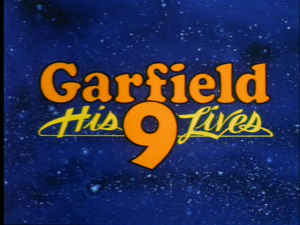The Enterprise is summoned to a space station where Dr. Richard Daystrom installs his revolutionary computer M-5, to take control of all systems of the ship. The computer soon turns out to be superior to a human crew, in normal ship operations as well as in a simulated battle against another starship. Then, however, M-5 destroys an unmanned ore freighter, and a crewman is killed when he attempts to cut off the computer’s power. Unbeknownst of the situation on the Enterprise, as M-5 has disabled any communication, a task force of four starships under Commodore Wesley continues the simulated attacks. M-5 takes the battle seriously, cripples the fleet and kills hundreds of crewmen. Daystrom has programmed M-5 with his own engrams, and Kirk uses this knowledge to convince the computer that it is guilty of murder and has to shut down. Wesley is authorized by Starfleet to destroy the Enterprise but he breaks off the attack when he notices that the ship is dead in the water.
This episode has largely been categorised as one of the better action episodes of the original series. This is thanks largely to the eye candy of seeing more than one Federation starship and the subsequent wargames. Indeed, back in the day it was one of the best looking episodes that helped finally give the series the genuine feeling that there was more than one ship in Starfleet. In the digitally remastered version we get even more eye candy in the form of the ore freighter that wasn’t seen properly in the original episode for budgetary reasons. Now we see none other than a recreation of the freighter we saw in the Animated Series. That alone is enough to make the most avid Trekkie’s heart beat just that little bit faster.
However if you scratch away this glossy surface we have one of the most philosophical episodes of Star Trek ever; long before Star Trek: The Next Generation’s classic “Measure of a Man.” The question the episode asks is an old one; should machines do the work of man and if so what becomes of the man? This is Kirk’s question more than anyone else’s in the episode as the M-5 is aimed directly at replacing the decision making capability of a starship. Kirk feels useless in this episode in the face of the M-5 hence Commodore Wesley’s “Captain Dunsel” remark but alas we can’t have a TV show about a computer piloting a starship and so naturally the computer goes bad. One thing that does pop up briefly is that the ore freighter is unmanned which tells us already that some of the more mundane yet essential jobs in space are already entirely mechanised so it would appear starfleet has been heading toward an unmanned future for some time before the M-5.
But the thought process behind Daystrom and his creation make us ask intriguing questions not just about this fictitious universe we like to sit and watch of an evening but also about our own future in space travel. Even if we discard the distances and time involved in space travel we are still left with an extremely hostile environment in which to go gallivanting around in cooped up inside a metal box. Is it wise therefore to say “What the Hell; we can go there so let’s go.” Science fiction is filled with examples of how this can be a bad idea not just for the crew of whatever ship we are travelling on this week but also for humanity itself. Death, disease, war, alien influences on human culture – it seems we don’t need to leave our planet to be affected by what goes on out there.
This was touched upon briefly in Star Trek: Enterprise’s 4th season when there are Humans who believe that Starfleet’s exploration of space is advertising Earth’s presence to hostile aliens that didn’t seem bothered before warp flight. This is something Daystrom seems to have forgotten since he envisions a future where nobody dies in space exploration because machines are expendable.
“Men no longer need die in space or on some alien world! Men can live and go on to achieve greater things than fact-finding and dying for galactic space, which is neither ours to give or to take!”
– Daystrom, defending the need for the M-5
This leads him to fall in to the trap of many a scientist in science fiction who develop supercomputers or robots – he builds a machine that learns but still considers it expendable. Therefore surely there is the danger that this machine will learn that it is not expendable or, like HAL in 2001: A Space Odyssey, it may judge its own importance in completing a given mission to be greater than the survival of a few humans in an unfortunate circumstance.
Ultimately, what this episode concludes is that the human spirit will always have a place. It was a foregone conclusion and is something that continues throughout all of Star Trek. As Captain Archer onboard the Enterprise NX-01 will later (or already said in canon);
“Starfleet could’ve sent a probe out here to make maps and take pictures, but they didn’t. They sent us so we could explore with our own senses.”






























